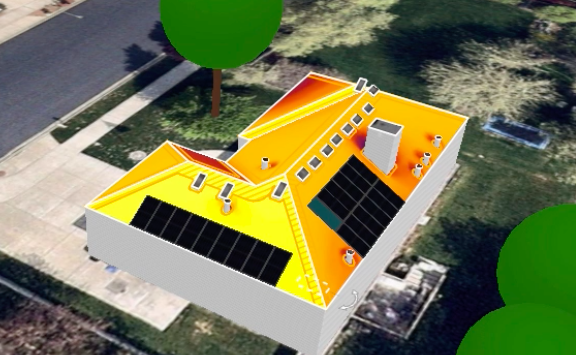
There are some solar installation costs we can’t control, such as the tariffs imposed on the industry this year. But when it comes to cutting soft costs, which now comprise more than half of the cost of a solar installation, installers have a valuable tool in their tool kits: remote site assessment and design. NREL has estimated that solar design software that supports remote shading analysis can save installers $0.17/W per 5-kW system (~$850 per install).
Samuel Adeyemo and Christopher Hopper experienced directly how time-consuming and laborious solar design can be when they partnered on a commercial solar installation to power a school in Kenya in 2012. Installing the system took only a few weeks, but designing the system from across the world required months of planning. After talking to other solar installers, Adeyemo and Hopper realized time-intensive solar design processes were a common struggle.
With the goal of providing a more efficient way to design solar projects while maintaining precision and accuracy, they set about building Aurora Solar in 2013. Today, tools like Aurora’s solar design software are modernizing the design process and offering significant benefits to installers that utilize them.
Save time, effort and money
One of the most tangible benefits of using solar design software is the time and money saved from reduced truck rolls. Traditionally, site visits have been an important step in the solar design and sales process, as a starting point for installers to accurately assess the shading on the roof and determine the appropriate PV system size.
When you or your team have to spend hours driving to prospective customers’ homes and businesses, climbing on the roofs and taking manual measurements, it can be costly—especially during the pre-sale stage. However, with software that enables you to get a detailed understanding of the project site as well as the solar access and shading, you can drastically reduce the need for costly site visits.
Residential installer Solarponics experienced this benefit firsthand. After switching to Aurora for their solar designs, the company has been able to reduce their pre-sale site visits by 90 percent while doubling installations and keeping their closing rate constant.
Improve sales with faster proposal turnaround times
Streamlining your solar design process through remote site assessment also offers important sales benefits. Being able to quickly send an accurate design and quote for a customer, rather than waiting on a site visit, can make a significant difference in closing the sale.
Hans Frederickson, owner of Cascadia Solar, learned this when a company used remote site assessment to close a deal with one of his prospective customers while he was completing his onsite assessment. Soon after that experience, Cascadia Solar switched to remote site assessment and now can send customers a quote within an hour of talking with them on the phone, their solar sales have doubled month over month and more than doubled year over year.
Having a more efficient assessment and design process also makes it possible to pursue leads that might previously have been too costly. “It used to be that proposals were so time-consuming that I would focus on carefully qualifying each lead, but Aurora has allowed us to respond in a much more effective way to every solar lead we get,” says Frederickson.
Bankable accuracy
Of course, in order for remote site assessment to truly be valuable, your solar design, production and bill savings estimates must be accurate and precise to avoid change orders down the line. Thankfully, with the application of cutting edge technologies, remote solar design tools like Aurora offer accuracy that companies can be confident putting their name behind. NREL has validated the accuracy of both Aurora’s performance simulations and its remote shading analysis, which was found to be statistically equivalent to onsite measurements.
Rebate authorities around the country, such as CT Green Bank, NYSERDA, and the Energy Trust of Oregon, accept Aurora’s remote shade reports as an acceptable replacement for time-consuming and costly onsite inspections previously required when applying for rebates.
— Solar Builder magazine

Leave a Reply
You must be logged in to post a comment.